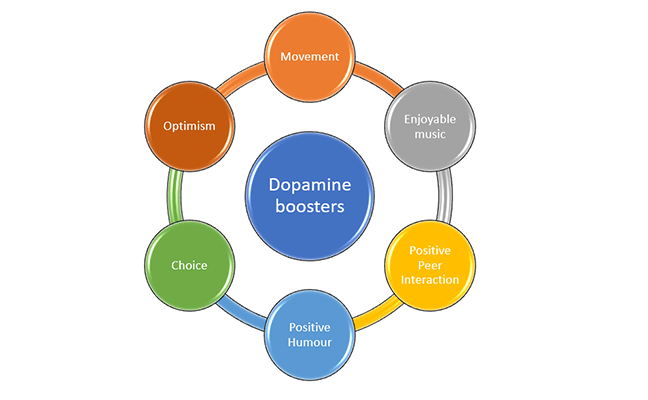According to Cozolino (2014), a few things that educators need to consider when creating a safe and trusting environment are:
- eye gaze;
- use of facial expressions;
- physical contact;
- appropriate level of challenge;
- encouragement;
- development of creative ways to approach difficult material, and
- not taking student anger or frustration personally.
Having an awareness of one’s own classroom approaches is the first step to maximizing impact on student learning.
The Role of Dopamine in the Educational Environment
It is possible to engage students and promote a positive educational environment by triggering the body’s release of the neurotransmitter dopamine. Judy Willis, a neurologist and classroom teacher, explains that “when dopamine is released in the brain, it promotes feelings of pleasure, a deep satisfaction, and a drive to continue or repeat the action that triggered the pleasurable response (McTighe & Willis, 2019, p. 20)”. As educators, we need to know how to stimulate dopamine and encourage our students to participate.
Consider the following dopamine boosters and reflect on ways that you can incorporate them in your classroom.

No comments:
Post a Comment